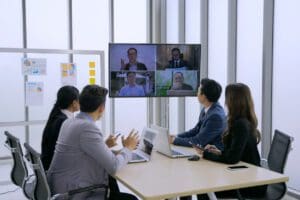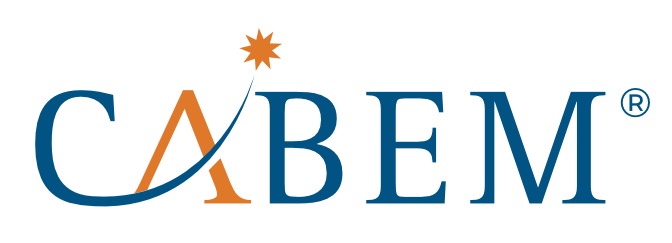Transforming the Traditional Workplace with Competency Management Software
An Upwork study suggests that 22% of the American workforce will be remote by 2025. The increase in remote and hybrid work models has transformed traditional workplace dynamics, presenting unique challenges and opportunities in managing workforce competencies. Many employers have adopted a hybrid work model that streamlines working processes by blending office-based, and remote employees. This model gives employees the autonomy they need to work productively. Depending on the company policy, employees may work from the office or telecommute every day, during a set number of days per week, or choose if they want to come into the office. As organizations adapt to these changes, it’s important to implement effective strategies for competency management to ensure that employees remain skilled, engaged, and productive.
Organizations in all of today’s industries face enormous challenges. Retaining top talent is harder than ever, while for the first time ever, there is a five-generation workforce, with different strengths and weaknesses. Efficient talent strategies rely on automation and a keen insight into employee capabilities. It is critical that learning and development is capable of yielding a flexible, and highly capable workforce. Hiring, retaining, and building sufficient skills are crucial to productivity in the hybrid workplace. Competency Management is needed in order to align the mission-critical competencies of employees with organizational goals.
Competency management software, such as CABEM’s Competency Manager plays a critical role in remote and hybrid work environments, where traditional methods of oversight and employee development are challenged by geographical distribution. By systematically identifying, tracking, and developing employee skills and competencies, competency management software enables organizations to align their workforce with strategic goals more effectively, regardless of physical location. This article offers guidance on managing competencies in remote work settings with a focus on virtual assessments, remote training, and maintaining engagement, as well as the benefits of a hybrid workforce and how competency management software streamlines the process. Let’s begin with a focus on establishing a successful remote work model.
Establishing a Successful Remote Work Model
The primary challenge of a remote or hybrid work model is establishing a strong company culture and working relationships, while collaborating effectively. A vital consideration in establishing a remote work arrangement is that the employees must be able to do their work as well or better than they do when working in the office.
There are so many benefits to this work model including greater productivity, a better work-life balance, and improved recruiting techniques through an expanded candidate pool. Improved employee morale, performance and retention are possible in a successful remote workplace.
Here are some key considerations to address in order to maintain a successful experience for the organization:
- Establish clear policies and expectations that emphasizes flexibility. The policy should provide guidance for meeting company expectations anywhere.
- Management practices that switch from processes to objectives. Be sure to address what employees do, rather than how or where employees work. As long as employees are meeting organizational goals, they can dictate the workflows that allow them to work most efficiently.
- Focus on regulatory compliance is critical when employees are working remotely.
Restructuring an organization’s work environment to a remote or hybrid model takes time and consideration, but when done well, it offers flexibility and creates a positive and productive work environment. It helps employees gain the trust of their employers by allowing them to show that they’re just as productive, if not more so, working remotely as they are when in the office.

Remote work creates a positive work environment.
Virtual Competency Assessments
Competency assessments are vital for understanding the skills and gaps within your workforce. In a remote setting, these assessments must be adapted to online platforms without sacrificing accuracy or depth.
- Leverage digital tools and software designed for online testing and assessments. These platforms can facilitate various forms of evaluations, such as multiple-choice tests, interactive assignments, and simulations that accurately measure a wide range of competencies.
- To maintain the integrity and accuracy of virtual assessments, incorporate time tracking, randomization of questions, and secure browser settings. Additionally, consider live proctoring options to ensure that assessments are fairly conducted.
- Provide immediate and detailed feedback to employees post-assessment. This helps in identifying areas for improvement and aligning future training to address these gaps effectively.
One of the key advantages of administering virtual competency assessments through competency management systems is the ability to create personalized learning paths for employees. By analyzing individual competency profiles and performance data, systems recommend tailored training and development opportunities that align with each employee’s unique needs and career goals.
Remote Training and Development
Competency-based training is a core component of competency management. In remote or hybrid environments, training programs need to be specifically tailored to suit virtual formats.
- Utilize e-learning platforms that support interactive learning, including video tutorials, quizzes, and real-time collaborations. These tools can enhance engagement and retention of information.
- Offer personalized training programs based on the competency gaps identified during assessments. This personalized approach allows employees to focus on developing skills that are most relevant to their roles and career aspirations.
- Continuously update training content to reflect the latest industry trends and technological advancements. This ensures that your workforce is not only competent but also ahead of the curve in a rapidly changing environment.
By identifying skill gaps, organizations can design targeted and personalized learning and development programs to address specific areas of improvement. These programs are customized to the needs of individual employees, ensuring that they receive the training necessary to excel in their roles. This personalized approach is more efficient and effective than one-size-fits-all training, as it focuses on the exact competencies required for each employee’s job responsibilities.
A skills matrix can be an invaluable tool when using Competency Assessments to identify skill gaps and training needs within an organization. A skills matrix is a visual representation of employees’ competencies and proficiency levels in various skill areas, typically aligned with the organization’s competency framework. By cross-referencing the results of Competency Assessments with the skills matrix, HR professionals and managers can easily spot patterns and trends, identifying areas where skill gaps exist. This matrix provides a comprehensive overview of the entire workforce, enabling targeted interventions and personalized training plans to address specific skill deficiencies.
Maintaining Engagement and Collaboration
Engagement is a critical challenge in remote work settings. Actively managing and nurturing engagement can drive better competency development and overall workforce performance.
- Implement regular one-on-one check-ins between managers and their team members. These sessions should focus on progress, challenges, and feedback related to competency development.
- Foster a sense of community by using collaboration tools that allow team members to work together on projects, share insights, and learn from each other. Encouraging informal virtual meet-ups can also promote a more connected and engaged team.
- Recognize and reward progress and achievements in competency development. Gamification of learning milestones or public acknowledgment in virtual meetings can boost motivation and engagement.
Managing competencies in a remote or hybrid work environment requires thoughtful strategies that leverage technology for assessment, training, and engagement. By implementing these best practices, organizations can ensure their remote workforces are not only competent and up-to-date with necessary skills but are also engaged and motivated. As remote work continues to evolve, so too will the strategies for effective competency management, ensuring that companies can thrive.
The Benefits of Competency Management in a Remote Workforce
Aligning employees with policies, processes, and performance requirements is critical in a remote or hybrid work environment. There are 9 ways that an automated competency management system can support this work environment.
- Establish Best Practices: Track and manage the skills, knowledge and abilities of employees to determine the most effective work styles and habits for each individual. Capturing best practice competencies leads to broader workforce success. Management can determine who is thriving while working remotely, as well as who needs more support.
- Refresh and Renew the Competency Model: The workplace has significantly changed in the last few years – where we work, how we work, and how we interact with colleagues. Organizations must adjust and refresh their competency model to reflect the soft skills and hard skills employees need in order to be successful in this new and improved workplace.
- Monitor productivity: The use of more shared technology and collaborative platforms in a hybrid workplace allows managers to view employee activity and get a clear overall understanding of the workflow of employees. They know when milestones are hit and can witness productivity. Equipped with this information, managers are able to effectively address underperforming employees and reward high performers.
- Assess Skills and Competencies Required: A hybrid workplace requires different skills and competencies than a traditional office setting. Additionally, employees learn differently. Ongoing skills assessments help determine proper learning paths for employees, while tracking progress. These assessments will help organizations hone in on skills and competencies needed to succeed in the hybrid work environment.
- Serve Customers Better: Use customer feedback to identify and promote the skills and competencies that are most impactful. In order to thrive, employees need to know how to serve their customers well.
- Up to Date Job Descriptions for Recruiting: It is critical to hire people based on the skills and practices that are needed in the hybrid work environment. Competency Management allows for job descriptions that specify levels of proficiency for skills such as communication, collaboration, and problem solving in a remote setting. Job descriptions reflect the skills and competencies that employees must have in order to thrive.
- Greater Breadth and Depth of Talent: It is critical to tap into a greater depth of talent when blending remote and in office work. A hybrid workforce allows for a more global workforce so it is important to have a wider talent pool to draw from.
- Effective Professional Development: In a hybrid working model, remote and office workers must all have the same opportunities for career advancement. Hard and soft skill training sessions, as well as mentorship programs, can be done virtually.
- Data-driven Decisions Across the Organization: Management can use a competency management system to track, manage, and assess employee performance. Automate and organize how you collect feedback from your employees, no matter your team’s size, or their location. Get real-time feedback on training with follow-up surveys so you can hone your content and make important business decisions.
Making Hybrid Work Best For Your Organization
An article from Gallup titled The Future of the Office Has Arrived: It’s Hybrid states that “Given that hybrid work seems to be here to stay in most organizations, it’s time to evaluate 1) what hybrid work looks like today and 2) how to make it work best for your organization in the future.”
Competency Management software fosters a culture of continuous improvement and personalized learning pathways, ensuring that employees are equipped with the necessary skills to adapt to rapidly changing business needs. Competency management software facilitates better workforce planning and talent mobility, allowing managers to identify skill gaps and high-potential employees more efficiently. This is particularly valuable in remote and hybrid settings, where face-to-face interactions are limited, making it imperative to leverage technology to maintain workforce efficiency and engagement.
Competency Management is a journey toward continuous improvement. CABEM’s Competency Manager software solution allows you to manage qualifications, skills and behaviors. It allows organizations to prove competency and track how it was demonstrated with sign-offs, course material and tests, experiences, witnessing, mentoring, and third-party education/certification. Competency Manager embraces the competency management you have already done, formalizes it, and organizes it in one place. Now, you can easily see where to prioritize focus as your program continuously improves!
As remote and hybrid work environments continue to grow in popularity, a system that allows you to track, renew, and monitor the necessary credentials of your team is needed. CABEM’s Competency Manager helps bridge this gap, to compile and create competencies in a logical way that institutionalized enterprise employee knowledge. If you are ready to add the benefits of competency management to your business, Click here to learn about our product or contact us..

